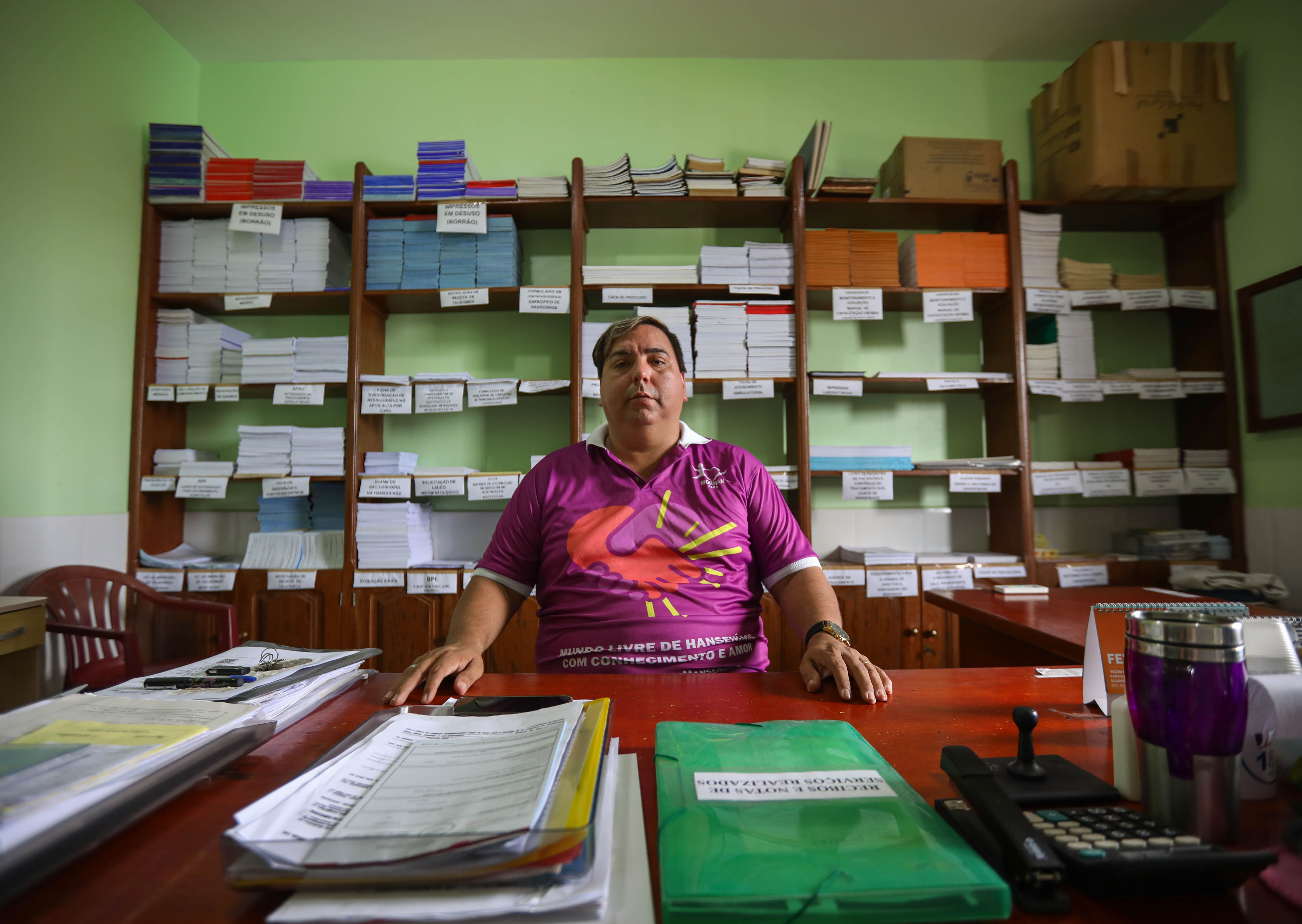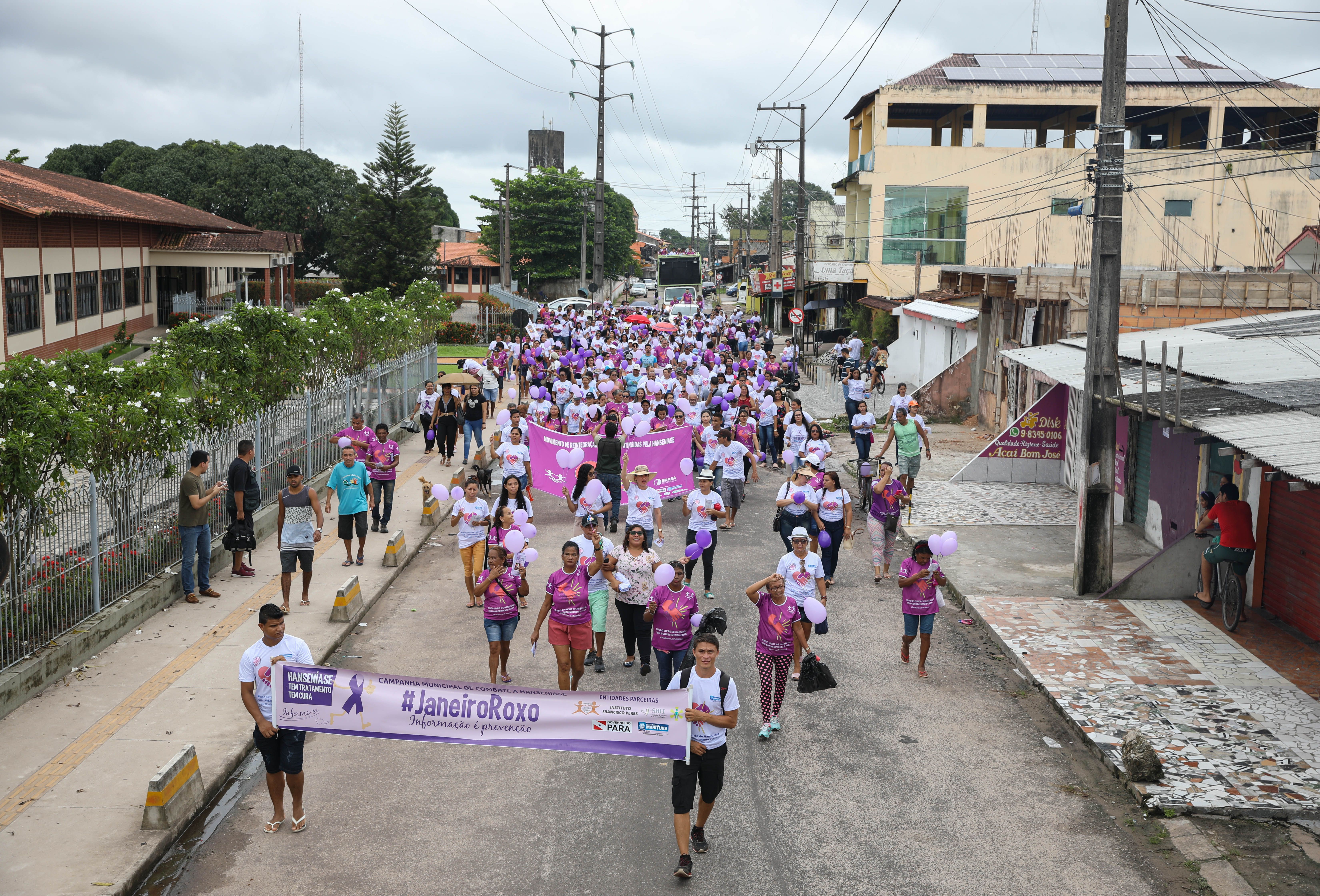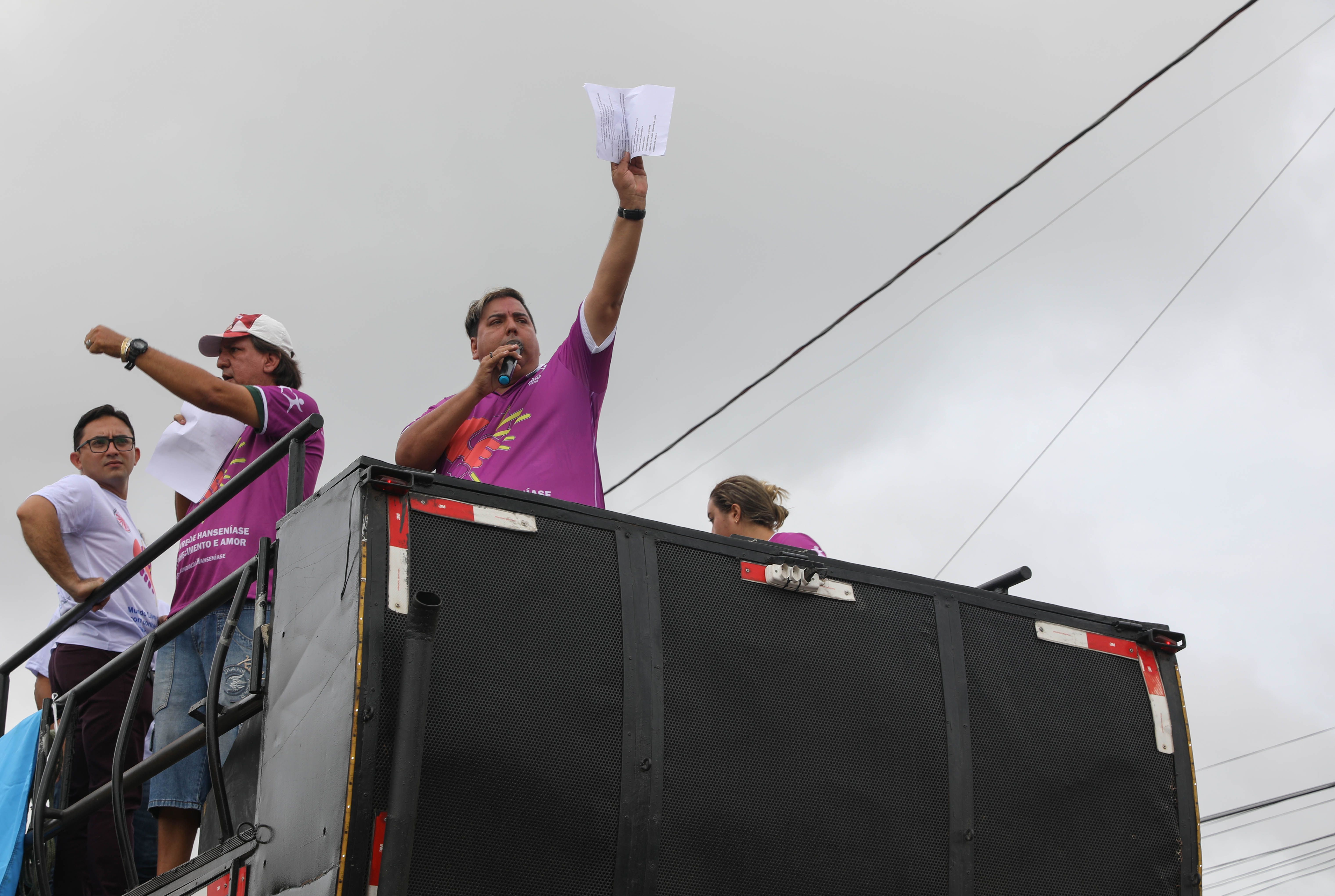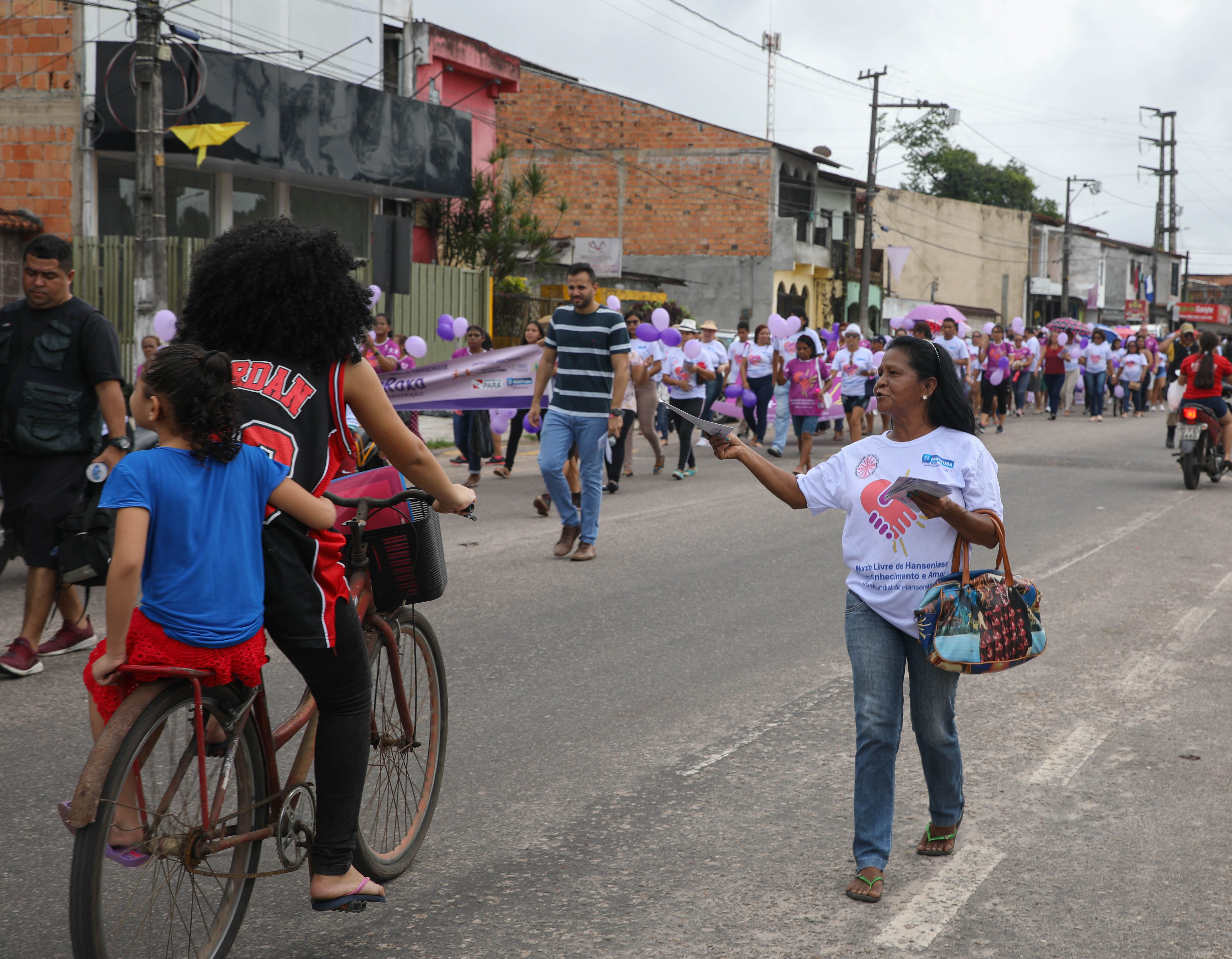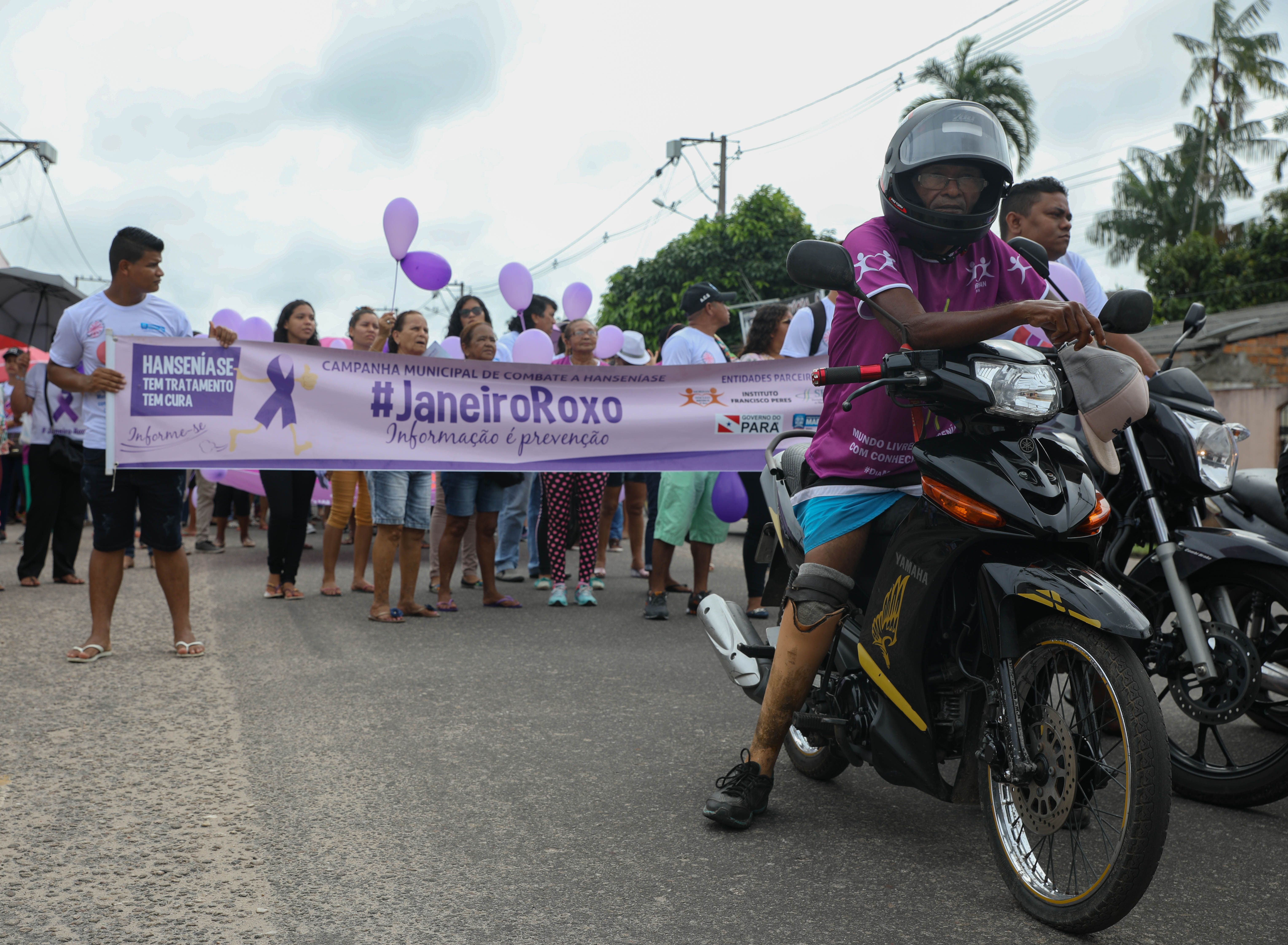MARITUBA, BRAZIL — Edmilison Picanco barely spoke as purple banners were flooding the streets of his hometown. He was shocked. Picanco never expected such a turnout for his march, he had no idea so many people still cared about leprosy.
The Biblical infectious disease, which can cause severe disfigurement and transmits through direct contact with airborne droplets, has plagued South America’s largest and most populated country for decades.
Before it was outlawed, the Brazilian government federally isolated leprosy patients in remote colonies to keep the disease from spreading. Decades later, the children of these patients—who number in the thousands—are calling for federal reparations through MOHAN, a national advocacy organization.
Picanco is the president of this organization for Pará, which over the last 25 years has seen more new cases of leprosy than any other state in the country.
As president, Picanco led the march, which was a part of “Purple January,” a month-long campaign to raise awareness for leprosy.
“People need to know about the problem if we ever want to fix it,” Picanco said.
While it’s his job to advocate for those affected indirectly and directly by leprosy, Picanco’s passion is personal.
His parents were patients.
During his youth, Picanco spent eight years living in a children’s home. He was cut off from his parents who were forced to reside in Marituba’s leprosy colony.
“They were degraded because of the disease. They removed me from them. I had every reason to be angry and I am angry,” Picanco said. “When they finally came back, I had relationship problems with my father and mother.”
Alongside Picanco and roughly 120 other volunteers, MOHAN is demanding 50,000 reals—approximately $9,830 U.S. dollars—in federal reparations to each of the children separated from their parents because of leprosy.
“No amount of money will ever be enough, but it can at least reduce the suffering a little bit,” Picanco said.
There are more than 30,000 people who would be eligible for reparations, according to the National Commission for Children Separated by Compulsory Isolation, which is a branch of MOHAN.
While Picanco said MOHAN’s push for reparations was gaining steam in January, it is currently in a standstill because of the devastating effects the COVID-19 pandemic has had in Brazil.
“It is completely unbelievable that they took the children away from their parents, who they left arrested in colonies,” said Alzira Rodriguez, a former leprologist who worked in several leprosy colonies. “The social and mental impact is impossible to mention.”
In the past, the Brazilian government has provided reparations to the leprosy patients themselves, but this is the first time the same demands are being made for their children.
“It is crazy to believe that this was a problem in the past, that we separated children from their families,” said Claudio Salgado, president of the Brazilian Leprosy Society. “It’s great the social movement is focusing on this cause, but we have to keep in mind there are many new cases of leprosy and we need to take care of them just as much.”
On average each year, more than 31,100 locals are infected with leprosy, according to a decade of data from Brazil’s Ministry of Health.
In the last two years, the number of new cases has been steadily on the rise. Only adding to the thousands of locals already affected by leprosy.
